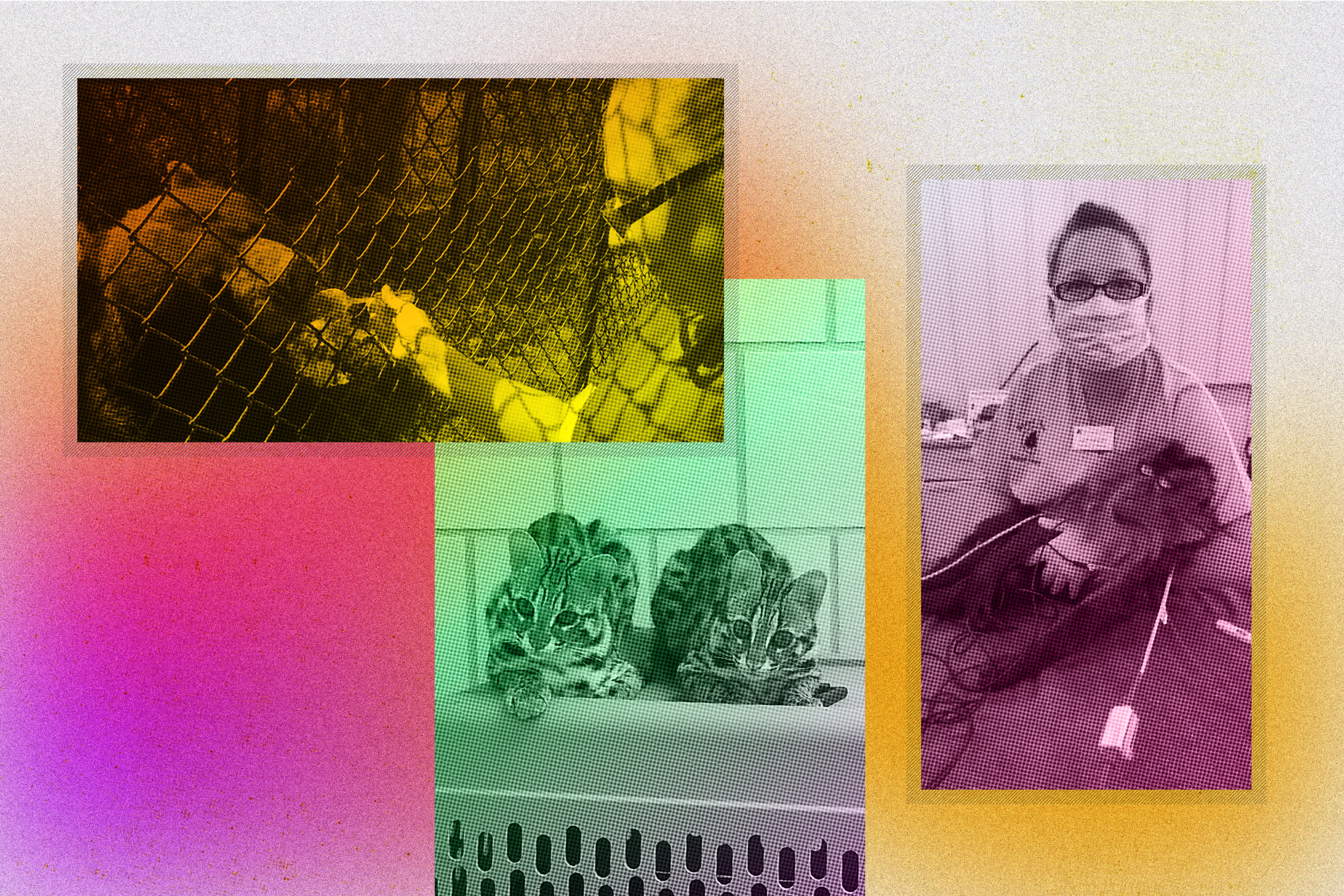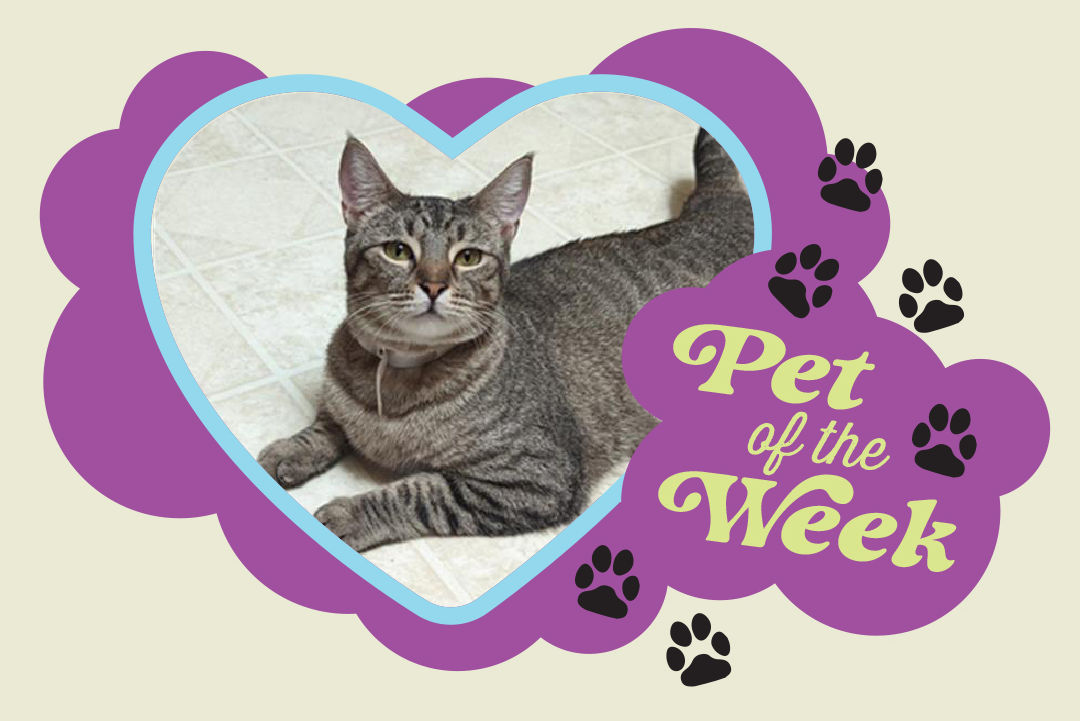To Save Lives, This Houston Rescue Ships Stray Animals to Other States
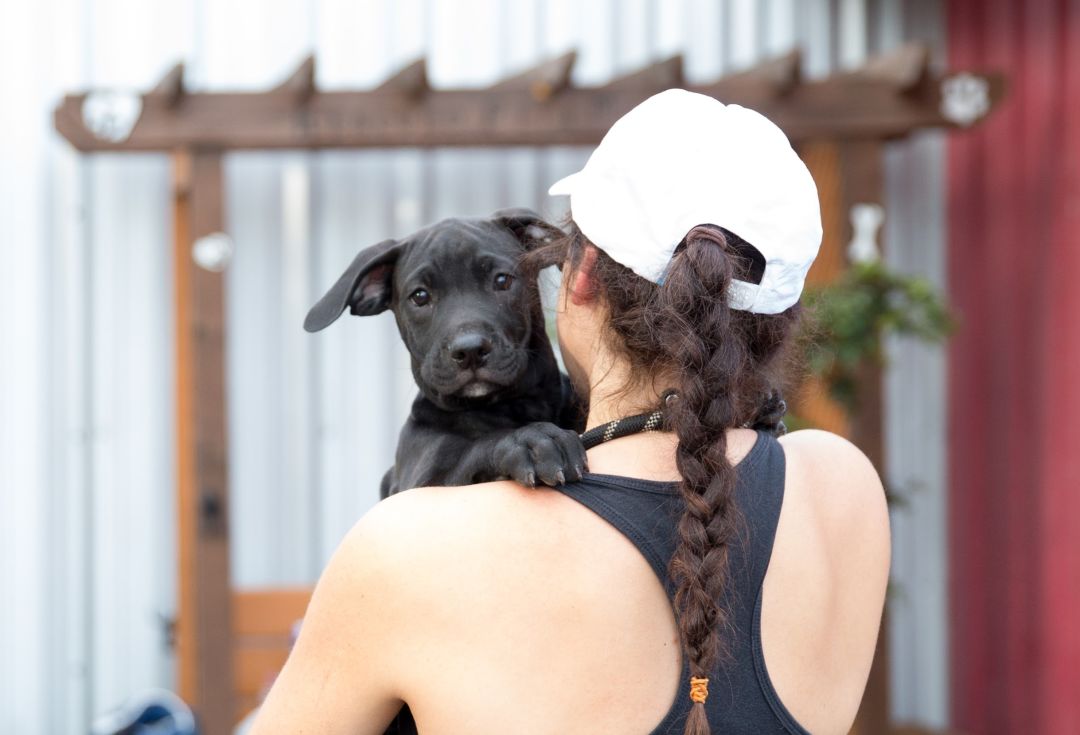
Rescued Pets Movement was founded in 2013 in response to Houston’s homeless animal crisis.
On a recent June afternoon, a young German shepherd mix named Mazy, no more than six months old, basked in some long-overdue attention in one of Rescued Pets Movement’s (RPM) kennels. Her body wiggled excitedly as she pushed her snout up against the bars, before twirling her body around in joyful circles. Behind her, a dog bed draped in a pink blanket gently cradled a yet-to-be-broken-in tennis ball, this temporarily humanless dog’s only personal possession. In a kennel in another room, a noticeably more subdued kitten named Jade, a tabby with a case of conjunctivitis, dozed peacefully in her bed.
Although they both seemed quite content with their situations, their stays here will be brief. Soon, Mazy and Jade will travel by van to Colorado to find their forever families, a journey made possible thanks to the efforts of RPM and its myriad partners.
Headquartered in Oak Forest, the nonprofit was founded in 2013 in response to Houston’s homeless animal crisis. The team rescues adoptable dogs and cats from city shelters, places them temporarily with local fosters, then sends them out for adoption to rescue organizations in states like Colorado, Illinois, Wisconsin, California, and Virginia. Now with 30 employees and an annual budget of $3 million, RPM is the largest organization in the nation doing this kind of work, and for good reason: An estimated one million stray animals call Houston home, due in large part to lax animal welfare laws, and the balmy weather that enables animals to breed year-round. Hundreds of strays and surrendered animals are euthanized by local shelters every year due to overcrowding.

RPM rescues dogs and cats from local shelters and transports them to states like Colorado, Illinois, Wisconsin, California, and Virginia.
In 2012, the year before RPM first started working with BARC, Houston’s municipal animal shelter, its live release rate was a dismal 42.6 percent. Last year, in large part due to RPM’s efforts, the shelter’s live release rate was 91.5 percent. In the decade that RPM has been in operation, the organization has transported more than 81,000 animals out of the Houston area and to their permanent homes in other states—over 60,000 from BARC alone. Shelby Roquemore, RPM’s special projects coordinator, says part of Houston’s stray animal problem stems from BARC not being given enough resources from the city to operate effectively. “It’s such a horribly underfunded program,” Roquemore says. “One thing people can do to help is to reach out to city council members and push for them to give BARC the resources they need to operate properly.”
For strays like Mazy and Jade, their journey to freedom typically starts at a local kill shelter. RPM staff members carefully review animals in need of adoption, often selecting from the euthanasia list. RPM then networks the animals to their rescue partners out of state, frequently in the Denver and Boulder areas. If an organization commits to taking an animal in, it’s put on a hold, then transported to RPM’s headquarters, where a staff veterinarian gives them an exam and any medical care they may need. Most animals are then picked up by a local short-term foster (RPM has a network of hundreds of them) who keep the animal in their home for anywhere from one night to two weeks before they are brought back to RPM and transported by van to another state for adoption.
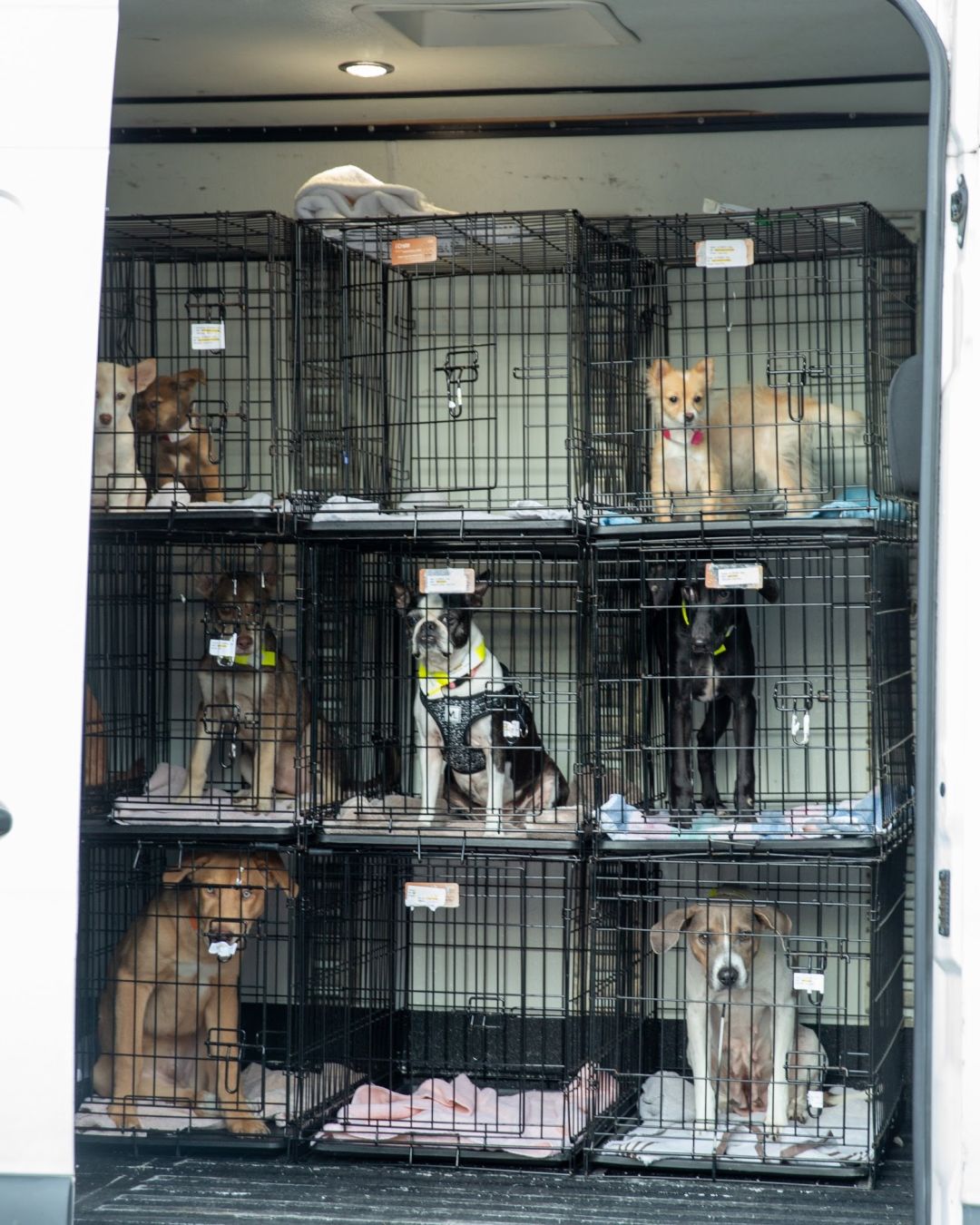
RPM’s fleet of vans travel anywhere from half a million to one million miles every year, transporting a yearly average of more than 10,000 pets.
RPM has 10 fully converted Mercedes Sprinter vans, which have been outfitted with dual air conditioning and heating systems, and enclosures designed to ensure the health and safety of the animals. On transport days (Tuesdays for dogs and Thursdays for cats), two staffers per van alternate between driving and monitoring the pets during their journey. These trips last three to four days in total, and the drivers are required to stop every six hours to feed and walk the dogs and clean the cats’ litter boxes. One driver must always remain in the van so the animals are never left alone. Once they reach their final destinations, they are turned over to a rescue partner, of which RPM has more than 65 across the country. The pets have usually been pre-adopted and will go to their forever families soon after their arrival. RPM’s fleet of vans travel anywhere from half a million to one million miles every year, transporting a yearly average of more than 10,000 pets.
While RPM’s team is doing the best it can to save as many animals as possible from euthanasia lists, Roquemore admits that it’s an uphill battle due to the sheer size of the Houston area’s homeless animal population. She hopes that by raising awareness, people with the means to affect change will realize that having so many homeless animals on the streets is a safety and moral issue. While it’s uncommon to see stray animals in neighborhoods like Montrose, the Heights, or River Oaks, they proliferate in other parts of town, particularly in less affluent areas. Those not living in impacted neighborhoods are often unaware of the problem, Roquemore says, noting that there are discrepancies in response and resources given to certain areas of the city.
“There’s a major issue with awareness depending on where you’re at. If someone were to call animal control for a dog walking down River Oaks Boulevard, animal control would be there quickly,” Roquemore says. “If you’re calling from Fourth Ward or Third Ward, you can call all day long and animal control will never come. It’s so compartmentalized.”
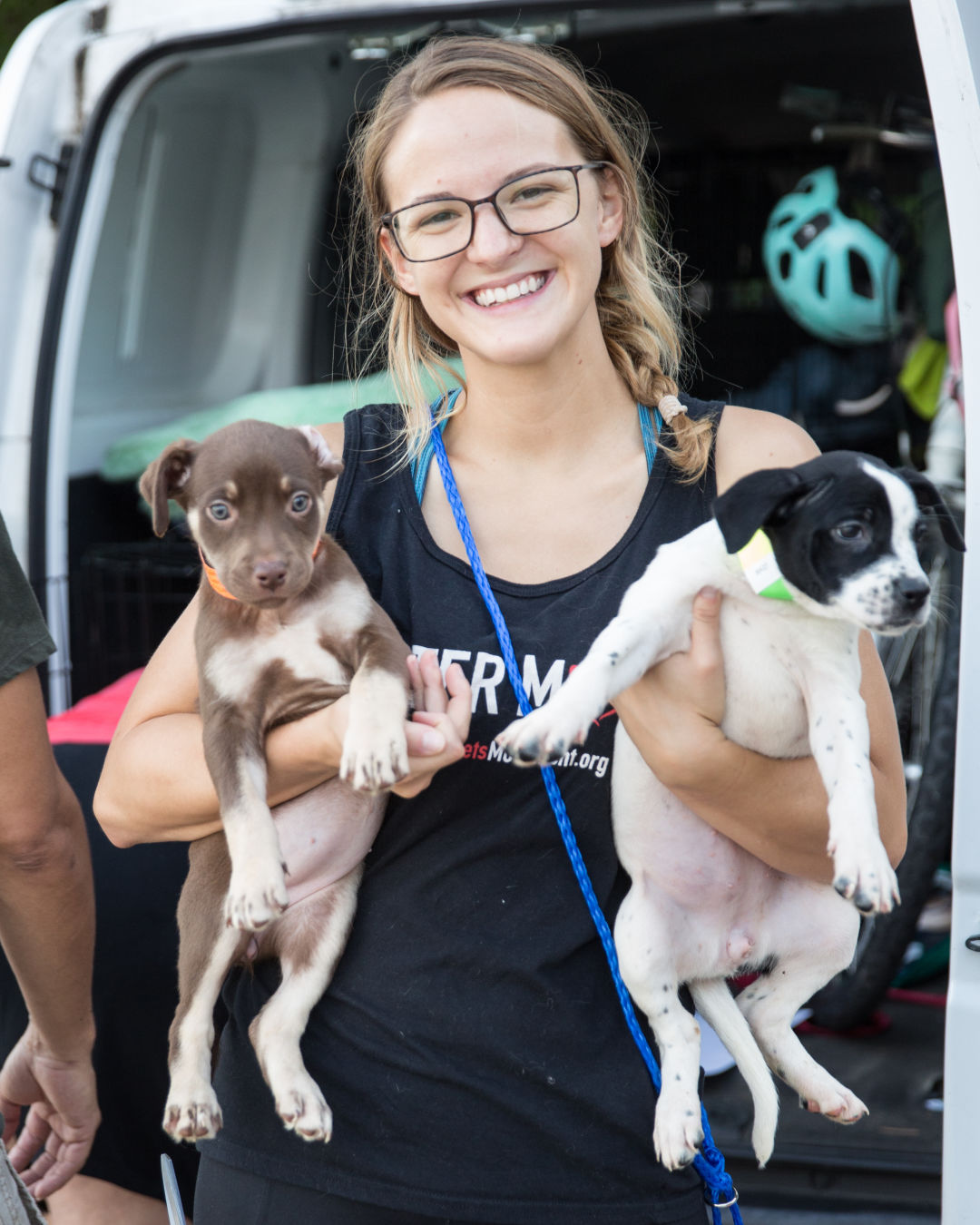
In the decade that RPM has been in operation, the organization has transported more than 81,000 animals out of the Houston area and to their permanent homes in other states—over 60,000 from BARC alone.
In addition to the city giving BARC more funding, Roquemore says another way to help alleviate the crisis is educating people on the benefits of adopting shelter cats and dogs instead of buying purebred animals. She hopes this can lead to fewer animals languishing in shelters and having to be transported out of the region by RPM. “The best thing about adopting an animal is that you can fully know the personality of the animal before you adopt them,” she says. “If you’re buying a puppy from a breeder, they could end up having major health problems or behavioral problems that you aren’t aware of. You’re also saving a life [from the shelter].”
Thanks to the work of RPM, Mazy the dog and Jade the kitten will eventually be adopted by eager families in cities far away from Houston, and their time on the streets and in shelters will fade away as they make happy new memories. While Mazy and Jade are settling into their forever homes, the stray animal crisis will be continuing here in Houston as more animals make their way onto the streets and into overcrowded shelters around the city. Roquemore and her teammates at RPM will be here trying to pick up the pieces.
“It's crazy that in Houston, where there's so many resources, we have this massive problem,” Roquemore says. “My mom always refers to it as ‘Houston's dirty secret.’ We have this giant stray animal crisis, and we just kind of pretend like nothing is going on. Even if you're not an animal person, you should care about the people and animals that are affected by this crisis.”
